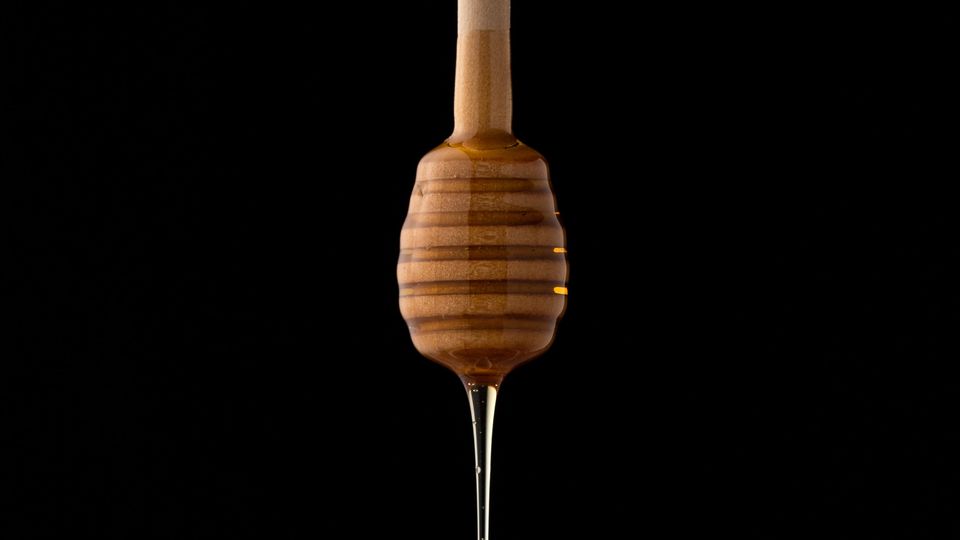Why Are Bees Making Less Honey? We Asked a Researcher
The honey trade isn’t as sweet as it used to be.

Complete the form below to unlock access to ALL audio articles.
The honey trade isn’t as sweet as it used to be. Yields in the US have been declining since the 1990s and have taken a deep dive in recent years, causing many beekeepers to pack up their hives and call it a day. What’s behind this fall in bee productivity? A fall in soil productivity, say researchers, as well as climate instability.
After combing through 50 years of agricultural data, researchers from PennState University say they found that the “productivity” of soils – the ability of soil to support crops based on its physical, chemical and biological properties – is waning across the US. Combined with warming climates, widespread herbicide use and loss of natural habitat, the researchers say beekeepers may need to adapt to save their hives.
Their research was recently published in Environmental Research.
Bees in the stats
“We were alerted to this topic from visits to beekeepers,” said Dr. Gabriela Quinlan, a research fellow in Penn State’s department of entomology and center for pollinator research. “[They] said to me that they’re not able to produce as much honey as they were 20–30 years ago and that it’s just getting increasingly difficult to be a beekeeper.”
After hearing these tribulations, Quinlan began to wonder if the honeybee was the canary in the “coal hive”, and that perhaps there are greater ecological changes afoot going unnoticed.
“What does that mean for other wild species of bees?” said Quinlan. “Does that mean that there are fewer floral resources for them? Because we know that honeybees are really good foragers; if there are flowers out in the landscape, they’re really good at finding them and bringing the nectar back and turning it into honey.”
Intrigued by these concerns, Quinlan and her colleagues began rifling through decades of data from the US Department of Agriculture. From annual honey yields to seasonal rain levels, from pesticide quantities to soil measurements, they analyzed reams of records and came to some concerning conclusions.
“We found that really broad factors like climate and soils are foundational, underpinning these eco-regions for honey production,” Quinlan said.
But how does one define an eco-region for honey production?
“So, there are certain regions in the US that are super conducive for honey production. What our survey suggests is that that’s probably because they have the right climate and the right soils that probably support the right floral communities to produce a ton of honey,” explained Quinlan. “So, places in the US would be the northern Great Plains, as well as the Gulf Coast around Texas and Florida.”
But pitching one’s hives in such an eco-region is no guarantee of sweet success. Quinlan mapped several factors that can boost or bust seasonal profits: “We found, looking at annual variation, that there are these other factors, like change in herbicide use, conversion of land from conservation to agricultural and different weather patterns from year to year. Those things are really fine tuning how much honey is produced in a given year.”
Many of these factors have been in a state of flux recently, leading to declining bee productivity.
Between 2020 and 2021, for instance, it’s estimated that US beekeepers lost 45.5% of their honey bee colonies.
“Some of the changing factors across time, like the weather becoming warmer and wetter with climate change, land use change, etc., are really going to be underpinning the changes we’ve seen across the last 30 years and annual variation in that,” Quinlan explained.
Along with recent climate change, one other factor, said Quinlan, seems to underpin the recent fall in bee productivity: soil.
Spoiled soil
“Soils, I’m learning, are very multifaceted and complex,” she said. “There has been a little research into how soils have these bottom-up effects on floral communities and, in turn, the pollinators that visit them.”
“What we used as a metric in this study was this ordinal metric, like a quality number score of soil based on soil taxonomy,” she added. “This metric was developed by soil scientists in the US, and it has been shown to be a pretty good measure of how soils support agricultural productivity, and it’s not been applied before to pollinators. But we thought that it could be a pretty good indicator of supporting plant health and productivity, which, in turn, could then support floral resources.”
The metric, known as soil productivity index, is calculated based on several qualities, such as a soil’s exchangeable and reserve nutrient contents, its tilth, organic carbon contents, clay mineralogy and the presence or absence of a root-impeding layer. Soils are given a number between 1 and 19, the higher figure indicating a more productive soil.
By applying this metric to their decades of data, Quinlan and her colleagues found that the highest honey yields were seen in states with either cool or warm climates and high soil productivity.
Based on this finding, the team placed climate and soil productivity as the two foundational pieces of their honey productivity pyramid.
“Climate and soil productivity set the foundation for the most floral-supportive states, likely by determining the types of floral communities that can grow in a region,” they wrote in their paper.
Above these two factors, Quinlan and her colleagues placed land use, then, on the top of the pyramid, they perched herbicide use, as its effects on bees were relatively marginal.
“Land use, the next most important spatial factor, may further constrain the types of flowers that are available in the landscape,” they wrote in their paper.
“Herbicide use, a proxy for land use quality and additional layer of environmental filtering, was not identified as very important as a spatial predictor in our hierarchical partitioning model, perhaps because it was too far abstracted to have an appreciable effect.”
The future of honey
So, now that the hierarchy of factors affecting honey production is better understood, what actions do Quinlan and her colleagues recommend beekeepers take to save their businesses? Well, there is no easy answer.
“It’s difficult, right?” said Quinlan. “Because climate is one of those things that is a little outside of our purview as individuals.”
“So much of [the fall in bee productivity] is driven by these really broad factors that, as individuals, we feel like we don’t have a ton of ownership over our ability to change, like extreme weather patterns and soil productivity.”
“I think that, as we think about the future and what that means, these effects of climate and soil are really having bottom-up effects. And so, I think we need to think more about what we're planting. We need to think about [planting] native plants with deep root systems that can withstand drought conditions. I think climate-smart pollinator plantings is a way forward.”
Reference: Quinlan GM, Miller DAW, Grozinger CM. Examining spatial and temporal drivers of pollinator nutritional resources: evidence from five decades of honey bee colony productivity data. Environ Res Lett. 2023;18(11):114018. doi: 10.1088/1748-9326/acff0c
Dr. Gabriela Quinlan was speaking to Leo Bear-McGuinness, Science Writer for Technology Networks.
About the interviewee: Dr. Quinlan is an NSF Postdoctoral Research Fellow at the Grozinger Lab, part of Penn State's Center for Pollinator Research.




